Ingredients for ice cream: where to buy?
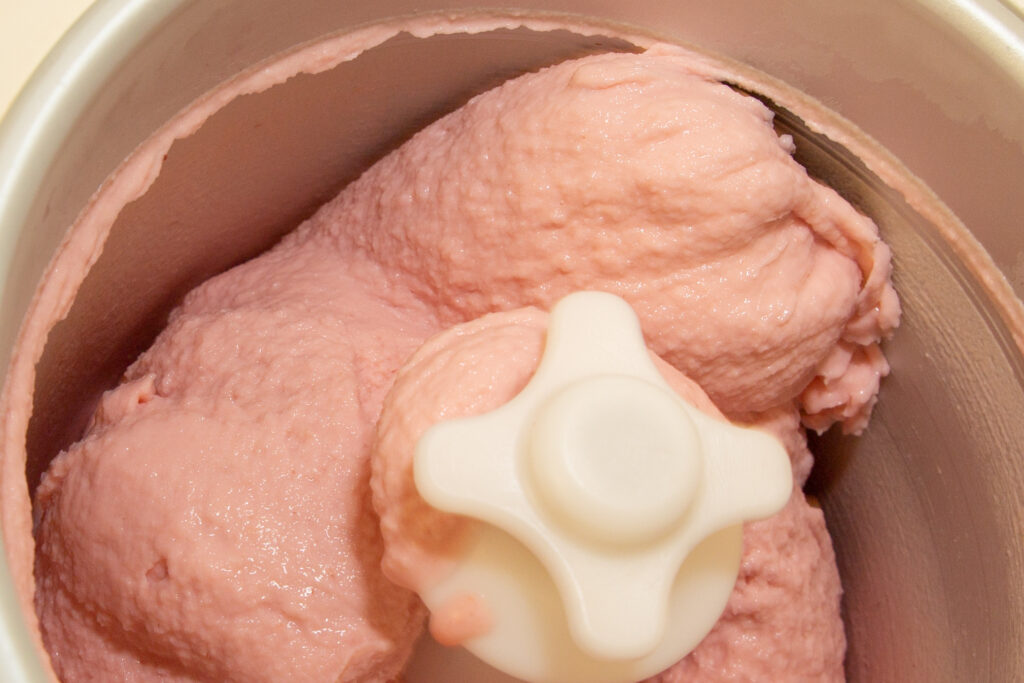
Ice cream making is an art in itself. Recipes that consist of only a few ingredients can work and also be very good for immediate consumption. But for a balanced, creamy ice cream that can still be enjoyed after several days in the freezer, you usually need many different ingredients. But where do you get them and what ingredients exactly do you need? Where do you buy ingredients that will take your ice cream making to the next level?
Since these questions come up again and again, I have put together here again the most common ingredients and Links for purchase deposited. Alternatively, the ingredients can nowadays also be purchased in well-stocked organic markets or pharmacies. A price comparison with online suppliers is often worthwhile. Especially if you make a lot of ice cream, a better price can often be found online for large containers.
Content
Various sugars
Ice cream usually contains quite a lot of sugar. The reason for this is not only that sweet things taste particularly good to us, but also the Freeze inhibition. Without sugar, the ice becomes hard. With sugar we achieve smaller ice crystals and thus Creaminess. If you want to read more about it, you can download the Basics of ice cream production read in another article.
Now you may wonder why in the ice so many Different types of sugar are used. This is due to the fact that these have a different sweetness have. So it is always a Balancing act between enough freeze inhibition and sweetening power. So that everyone does not have to calculate it themselves, I provide you here recipes for which this is already calculated.
Of course, not everyone has the same taste sensations, so you can always vary within a certain range. So if a recipe is not sweet enough or too hard, you can try to increase the amount of sugar.
Household sugar is very often used in recipes with the highest amount and is present in every household. It is usually refined. This means that it has been purified by various processes. Chemically, it is almost pure sucrose. The advantage of household sugar is that it has no aftertaste. It is produced from sugar cane or sugar beet.
But you can also use it 1:1 Replace with raw sugar, if you like the caramel note does not interfere. This has a brownish tint and consists of unrefined sugar from beets or sugar cane. The brown color comes from the residual molasses. Depending on the variety, the intensity and color can vary greatly. You can get household sugar in any supermarket. Raw sugar is now also very common. If you want to buy one in organic quality, for example, the following comes into question.
But now to the individual special types of sugar, which you may have only learned about since the ice cream was made.
Dextrose (= glucose)
Glucose ≠ Dextrose
Unfortunately, the myth persists that dextrose and glucose are the same. But this is not so!
Dextrose or glucose is a naturally occurring carbohydrate that can be found in fruits, for example. It leads to a Lowering the freezing point (130%) and at the same time has a lower sweetening power (70%) than normal table sugar. This allows us to make the ice cream creamier without it tasting too sweet.
Industrially produced is the starting product of glucose and dextrose Strength. This will enzymatically splitbut the process takes different lengths of time. Dextrose is the End product, when the Process completely run through is. It has the value 100 or, more precisely, has the dextrose equivalent 100 (abbreviated: DE100). Starch has as its starting product corresponding DE0.
Dextrose is available in every major supermarket. However, it is usually mixed with vitamins. In principle, this does not bother us. But if you want to have pure dextrose as an ingredient, which is usually cheaper in large containers, I can recommend the following products:
Tip: 1kg is enough for approx. 25 recipes or 100 ice cream portions.
Glucose
With glucose, on the other hand, the Process of enzymatic splitting The strength broken off in between. It therefore has a value in between (DE20 - 68). It is less sweet than dextrose, which has been broken down to the very end. In return, glucose lowers the freezing point similarly well as household sugar and thus better than dextrose.
Glucose is available as syrup and dried. For the Simple weighing I recommend you Dry glucose. For my recipes I use as an ingredient a Dry glucose with DE35-40. Unfortunately, the DE specification is not always given, so I have picked out these two products for you.
Tip: 1kg is enough for approx. 50 recipes or 200 ice cream portions.
Erythritol
Erythritol (or eryhtritol) can be used as an alternative for sugar. Since it is a sugar alcohol, it is not broken down in the body. It has 50-70 percent of the sweetening power of table sugar, but no calories and no effect on blood sugar and insulin levels. It lowers the freezing point much more than regular sugar. This keeps our ice cream nice and soft in the freezer. However Sugar alcohols not entirely uncontroversial and you should be careful with the amount if you have any pre-existing conditions.
Xylitol
Xylitol (or birch sugar) is also a sugar substitute. This has a similar sweetening power as household sugar, but produces a slightly cool feeling in the mouth. With other desserts or baked goods, this can create an unpleasant feeling in the mouth. With chewing gum and of course ice cream, this is not a problem. The calorie intake is reduced by about 40 % and the freezing point is lowered significantly more compared to normal sugar. Xylitol also causes our ice cream to stay nice and soft in the freezer.
Dry matter
Dry ingredients in ice sound strange at first. But I can assure you that they are important for the Improve ice structure. It's best to think of it as an ingredient that adds substance to your ice cream. If you compare a milk ice cream with a pure water ice cream, you know that the former feels different in the mouth than the latter and also melts differently. Many ingredients in ice cream contribute to the dry matter, especially the various sugars and, in milk ice cream, the milk ingredients. However, since we usually aim for a value of 30 - 40% dry matter, we need assistance. Fortunately there are natural ingredients which can increase the percentage of dry matter in our ice cream.
Inulin
Inulin is a mixture of different sugar components but indigestible for us. This even has a positive effect for our intestinal flora and inulin is therefore often used for prebiotic applications used. It is found in various plants and is mostly obtained from chicory. For our ice cream here is not the sweetness decisive, but we use it mainly to increase the dry matter. Thus, we achieve a pleasant texture of the ice cream without having to use more fat or sugar. If you do not tolerate inulin, either omit it in small quantities or replace it with skim milk powder in dairy ice cream recipes.
Tip: 1 kg is enough for approx. 30 recipes or 120 ice cream portions.
Skimmed milk powder
This powder is produced by the Drying of skimmed milk made. For ice cream production, actually make sure to buy skim milk powder and not whole milk powder. This is because whole milk powder has a shorter shelf life and contains more moisture. Skimmed milk powder we need for our Milk ice cream production, in order to Viscosity and to reduce the formation of ice crystals.
Tip: 1kg is enough for approx. 30 recipes or 120 ice cream portions.
Emulsifiers (binders)
Binders can be used to give the ice additional Stability be awarded when we no raw egg want to use. Emulsifiers bind the water and make the ice cream mass thicker. However, you should not use too much of it, otherwise the consistency can become rubbery or slimy. Unfortunately, this has happened to me myself. Here, too, there are two binders that natural are and are made from seeds.
Guar gum
Guar gum is obtained from the Seeds of the guar bean and is often used in the food industry as a natural thickening agent. deployed. Do not let the E-number designation (E412) confuse you. E-numbers are assigned to food additives and do not automatically mean that something is artificial or unhealthy.
Tip: 125 g is enough for approx. 100 recipes or 400 ice cream portions.
Locust bean gum
Locust bean gum is produced from the ground Seeds of the carob tree produced. Just like guar gum, it prevents the formation of large ice crystals. It is also frequently used as an additive in foods, where it is labeled E410. However, this does not make it any less natural.
Tip: 65 g is enough for approx. 60 recipes or 240 ice cream portions.
I hope this list helps you to find your ingredients. If there's anything else missing from the list, please leave a comment. And remember that choosing the right ingredients is crucial to achieving a perfect, creamy ice cream.
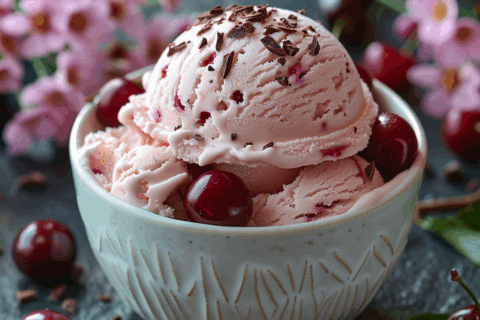
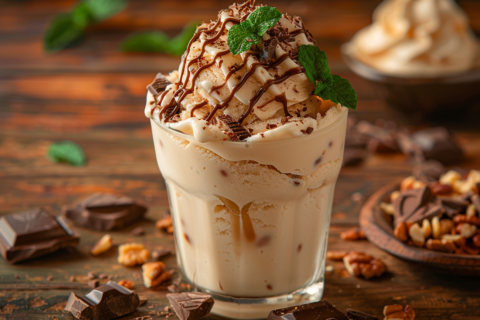
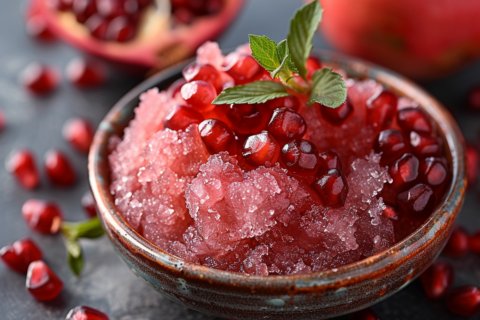
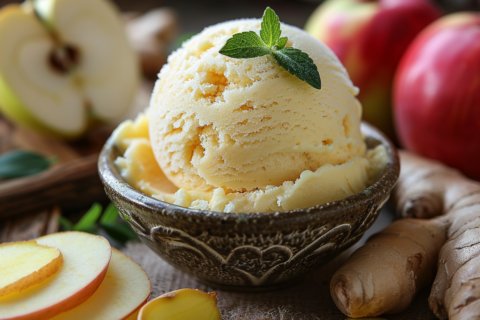
Dextrose and glucose are chemically identical, dextrose is an outdated name.
What is marketed as glucose syrup or dry glucose is a mixture of different substances whose composition differs depending on the progress of hydrolysis and which is therefore also perceived as different.
See also
https://de.wikipedia.org/wiki/Glucose
and
https://de.wikipedia.org/wiki/Maltodextrin
Hello Detlef,
Thank you very much for your explanations.
Nevertheless, I would like to point out here for all those who have nothing to do with chemistry that we need both glucose and dextrose to make ice cream. They differ in their properties (sweetness and freezing point reduction).
By mixing all the ingredients together, you can achieve a better balance for the recipe and therefore a better consistency of the ice cream. In any case, it is very important to buy the right glucose and dextrose. For our recipes, glucose should have a value of DE35-40, while dextrose has a value of DE100 (See text for explanations). This article was created to make it easier for you to find the ingredients.
Have fun making ice cream!
Why does A**zon always have to be the only source of supply? There are also other good sources.
Hello Lara,
Thank you for your comment! I like to recommend Amazon as a source of supply because I regularly order there myself and really appreciate the large selection and fast delivery times. But of course there are also many great specialist retailers and smaller online stores. However, with some recipes, you might have to order from several different stores and, if things go badly, you might have to pay shipping costs several times.
Of course, everyone can decide for themselves where to order or shop. My links are only suggestions and are also intended to define the product more precisely or to inspire you. Some people may simply find what they are looking for at their local supermarket if they know what they are looking for.
Which sources do you like to use for your ice cream ingredients?